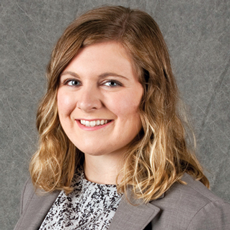
What does it mean to win post-acute care? There aren’t any trophies involved, no big acceptance speeches in front of the industry. What winning providers do have, however, is a deep understanding of their data and a competitive edge in their markets.
That was the word from a panel speaking at the Post-Acute Link Care Continuum Conference held Monday in Chicago. Improving volume and occupancy all leads back to data, and that data can be used to drive each individual providers’ “winning” competitive edge, explained moderator Steven Littlehale, executive vice president and chief clinical officer of PointRight Inc.
“We ultimately wanted to help people differentiate themselves in the market, how to demonstrate with their data that they are doing something different, something better, and how to take that and bring it to market,” Littlehale said.
When it comes to harnessing that data there is “no cookie cutter approach, no one-size fits all” solution, said Nancy Schwalm, chief business development officer for Vivage Senior Living. But there is a series of strategies that long-term care providers would be wise to use in their own operations.
- Understand your market. It’s hard to drive referrals into your facility if you don’t understand the space you’re working in, Schwalm shared. That’s especially true for providers operating in a variety of markets with different “local flavors.”
“Each market is very different,” Schwalm said. “We found that by positioning each home very uniquely, identifying within that community a market strategy that really relates well to not only primary referral sources, but secondary and tertiary as well.”
- Tap into your strengths. Schwalm stressed the importance of defining the community through affinity programs, like behavioral health and memory care, in setting her organization apart in the market when it comes to referrals. Tapping into each facilities’ niche or strengths can also open up the doors to new relationships providers may not have expected, shared Fred Benjamin, president of the skilled nursing division of Lexington Health Network.
“What we’ve been trying to do is find all different kinds of ways to partner with these systems, as many different ways as we possibly can,” Benjamin said. “When you’re partners they know everything that’s going on. And I want them to know what’s going on, because at the end of the day they don’t have time to work with 27 different chains. This is hard work to develop one of these strategic relationships, so if we can get in the door and develop one of these relationships with them we want to find a variety of different ways to access that relationship.”
The panel also recommended helping hospitals with patients who are hard to place into post-acute care for behavioral or other reasons, whether it’s through a program to help prepare those patients while they’re still in the hospital, or recommending another provider that may be a better post-discharge fit.
- Look beyond hospitalization and quality measure data. That was the advice from Julianne Williams, co-founder and CEO of Dycora Transitional Health. Williams said looking at data beyond the “simple data sets” providers are accustomed to studying can pay off in the long run.
“There are numbers that you would not expect to be talking about, and the observations that are being made about the company that you may oversee,” Williams said. “Things like ‘We noticed that you have a lot of staff turnover … who are we going to talk to next?’ Those are the soft-side numbers that I think we’ve got to start looking at and being a little bit more robust in terms of all of the things that truly drive quality, not just the numbers that are being driven through the MDS.”
Williams also stressed that there must be a story behind the data, and that providers must prove that they “make it happen” in real life, not just on paper.
- Know your customers. Understanding what services and practices drive consumers in the market is key, the panel said. Schwalm noted that her organization is looking into developing a position solely dedicated to resident engagement, and makes a point to research consumers’ wants.
“They are not afraid to use the internet to research us, we have to research what’s going on with the consumers in each of our unique markets,” Williams said. “They are the drivers.”
Sounds like a winning strategy to me.
The Post-Acute Link conference continues Tuesday in Chicago.
Following Emily Mongan @emmongan




